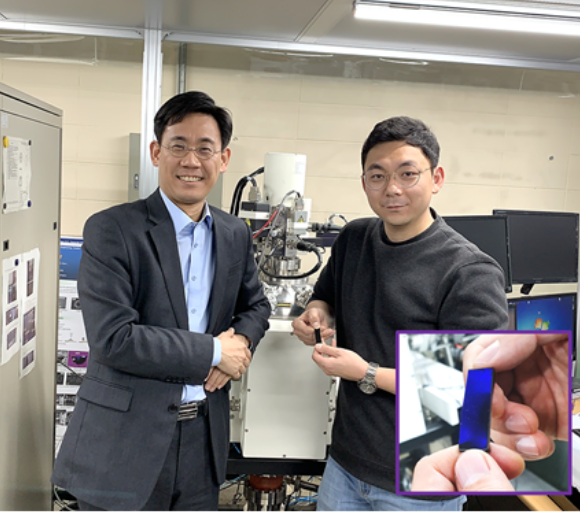Department News
Prof. Sung-Hoon Ahn’s Research Team Develops Color-Based Large Strain Sensors
Author
관리자
Date
2020-05-07
Views
905

Professor Sung-Hoon Ahn of Seoul National University Dept. of Mechanical Engineering and his team have developed strain sensors using structural colors.
The sensors were inspired by the micro/nano patterns found on the surface of a butterfly wing or a bird’s feather. There are two different ways of creating color: the traditional method uses color pigments and dyes, and the structural color method uses micro/nano structures. When white light is incident on a surface with micro/nano structures, light interference and scattering occur, selectively reflecting or absorbing certain wavelengths of the light. It thereby causes the human eye to perceive color. The structural color-based sensor developed by the team is able to measure and display the strain rate in color, without need for electric circuits. It can measure up to 100% of tensile/compressive strain and up to 78% of shear strain.
Current stain rate sensors have a limited range of measurable strain, or require electric circuits to carry out the measurement. The team designed a strain sensor that measures strain rate and displays it as a change in color, with no need for electric circuits.
Structural color consists of two-dimensional nano patterns on the surface of polydimethylsiloxane (PDSM), that are distanced similarly to the range of visible light wavelength. When white light is incident on the surface at a certain degree, the corresponding colors are reflected from the visible light wavelength range. When force is applied to the PDSM material, changing its form, the distance between nano patterns also change, thereby transforming the reflected color. Current research on structural color and strain rates only focus on providing explanations for the phenomena; however, this research contrived a mathematical model between the wavelength and strain rate, applying it to design an actual strain sensor. In addition, the sensor is able to measure tension, compression, and shear strain, by incorporating the nanopattern design with a variety of diffraction phenomena.
Lead author Dr. Ying-Jun Quan (SNU Institute of Advanced Machines and Design) commented: “The sensor takes the form of an integral structure, manufactured via a process called soft nanoimprinting. It is suitable for mass production, as it does not require any additional processes; it also has better durability compared to other structural color nano pattern structures consisting of multi-materials, due to its integral structure.
Corresponding author Prof. Sung-Hoon Ahn commented: “The sensor displays the strain levels without additional circuits or wires. We expect that it can be used for soft robots and wearable devices that are flexible in form.”
The research was funded by the National Research Foundation of Korea’s Mid-Career Researcher Program (Priority Project), Korea-Germany Intelligent Manufacturing System Lab (Basic Research Support), etc. It was published on the cover of the May issue of ACS Nano.
Viedo: " target="_blank" rel="noopener">
Links to articles:
Veritas Alpha http://www.veritas-a.com/news/articleView.html?idxno=321546
Metro Seoul https://www.metroseoul.co.kr/article/20200428500212
Kyosu Shinmun http://www.kyosu.net/news/articleView.html?idxno=50646
Newsworks http://www.newsworks.co.kr/news/articleView.html?idxno=451392
Donga Science http://dongascience.donga.com/news/view/36342

